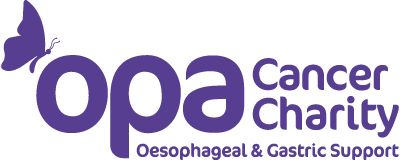Three decades of Oesophagogastric cancer care: now a curable disease
Oesophageal and gastric cancer together affect approximately 1.6 million people per year globally1. Although they are each distinct cancers with their own pattern of behaviour, they have both historically had a dismal prognosis. For oesophageal cancer, reported cure rates in the UK and USA during the 1970s were as low as 4–5 per cent, increasing to 15–18 per cent by 20102,3. For gastric cancer, the prognosis remains poor worldwide, with an overall cure rate of 20–30 per cent, although cure rates of over 70 per cent have been reached in Japan. Recent studies have demonstrated a 5-year survival rate of over 50 per cent for patients with junctional and gastric adenocarcinoma who underwent perioperative chemotherapy plus surgery4.
Reasons for the improved outcomes are multifactorial, and likely reflect a combination of better staging, improved treatment strategies, and refined perioperative care5,6. Japan attributes some of its excellent outcomes in gastric cancer to a screening programme, but these are not prevalent across the world. However, primary care and specialist centres can now easily access endoscopic evaluation for patients. Perhaps this ease of access has led to investigation of symptoms that may have previously been overlooked, such as abdominal discomfort and even pain, where before dysphagia and weight loss would have prompted investigation5. This makes it more likely for patients to be diagnosed at an earlier stage with a higher chance of cure. Perhaps most importantly has been an increased public awareness of red-flag symptoms stimulated by national studies such as Be Clear on Cancer and the Newcastle Oesophagoose campaign that has prompted patients to visit their general practitioner7,8. Better screening tools will also improve identification of earlier cancers. Experimental tools such as the Cytosponge-TFF3™ test, which has been shown to be safe and acceptable and has a sensitivity of 80 per cent in patients with Barrett’s oesophagus9, and breath testing to identify volatile organic compounds10, are showing promise as less invasive tools for identifying oesophagogastric cancer. Identifying earlier disease can also increase the opportunity for endoscopic treatment. There are excellent results for T1a cancers for both oesophageal and gastric cancer, but further research into its role in more advanced disease is required11,12 to see whether organ preservation is still feasible, perhaps in combination with adjuvant chemo(radio)therapy.
Improved cross-sectional imaging, and the availability of CT–PET and staging laparoscopy have permitted appropriately targeted treatment. These modalities have improved the identification of occult disease and reduce unnecessary surgery in those in whom cure is not possible. However, it is important that these patients still receive consideration by tumour boards which may improve survival and lead to better palliation13.
Results from the ChemoRadiotherapy for Oesophageal cancer followed by Surgery Study (CROSS) and Medical Research Council Adjuvant Gastric Infusional Chemotherapy (MAGIC) trials have both demonstrated a significant improvement with neoadjuvant treatment for junctional and gastric cancers14,15. Neoadjuvant chemoradiotherapy has an established record in patients with an oesophageal squamous cell carcinoma4,16. The MAGIC study demonstrated a median survival of approximately 36 months in patients who underwent perioperative chemotherapy and surgery for gastric and junctional cancer, and the FLOT (fluorouracil plus leucovorin, oxaliplatin, and docetaxel) regimen has increased this to 50 months. Undoubtedly even more effective regimens will become available, and the ability to tailor this to individual tumour biology by adding targeted immunotherapy is under study. Whether neoadjuvant chemoradiotherapy or chemotherapy is superior still remains an area for research, but it is likely that both will continue to be vital components for treating patients with these diseases17.
If perioperative oncological treatment has substantially improved the cure rates from surgery, the other key component for improving outcomes is changes to perioperative care. Cardiopulmonary exercise testing (CPET) is frequently employed to help stratify patient risk and identify problems that may potentially be optimized. Although there has been much investigation into whether CPET testing produces values that are both sensitive and specific in predicting complications, it is becoming increasingly clear that there is a correlation with parameters derived from CPET; better anaerobic threshold and lower minute ventilation/carbon dioxide production are associated with better outcomes. The identification of areas for optimization forms part of the continuum of the enhanced recovery pathway.
These advances in perioperative care go hand in hand with an improvement in the quality of surgery. There is increasing evidence that an oncological operation with appropriate lymphadenectomy confers a very definite survival benefit for patients18,19. Centralization has led to surgeons gaining greater experience at performing resections and managing complications. It is even conceivable that further centralization may occur.
Most centres undertaking oesophagogastric resections in the UK have integrated enhanced recovery pathways into the patient journey. These are multimodal, and aim to help patients recover as swiftly as possible after surgery and return to normal function. The protocols differ subtly from centre to centre but the underlying principles are the same, addressing the optimization of co-morbidities, early mobilization, improving nutritional requirements as well as a structured postoperative approach that the whole team follows. It likely that no individual component leads to an improvement in patient outcomes, and improvements are likely to result from a series of marginal gains. A previous systematic review20 suggested that early mobilization, removal of urinary catheters in the first 48 h, oral intake with at least sips of water on the first day, and enteral feeding may form a core of important components.
The integration of minimally invasive and robotic surgery into these pathways has occurred more recently. These techniques have definitely demonstrated some advantages, usually with reduced blood loss and reduced length of hospital stay, but there are mixed results regarding their long-term benefit and widespread reproducibility. Robotic surgery has yet to be adopted widely and so there is a paucity of long-term data for this technique. Robotic surgery offers standardization of technique and amelioration of operator fatigue, but further work is needed to establish whether there are overall better outcomes for patients.
There is now increasing research into prehabilitation. This is crucial to maximize the number of patients fit enough to be offered surgery given the known deleterious impact of neoadjuvant therapy21. Prehabilitation programmes are resource-dependent. Many patients struggle with hospital attendance, which many programmes require. Regular exercise classes that increase aerobic fitness and muscle strength, as well as nutritional advice are costly and potentially prevent widespread adoption.
Survivorship is key and, now that it can be expected that more than half of patients with potentially curable disease will survive 5 years, the focus must be on patient quality of life and return to normality. How quickly can this be achieved? Some patients can return to work within a year of surgery, whereas others suffer with ongoing symptoms, a legacy of the huge anatomical and physiological disruption that surgery causes. Fatigue, gastrointestinal symptoms, pain, and the mental health impact can all be long-lasting22. A drive to recovering these functions as quickly as possible, and active interventions to address the symptoms, may serve to ameliorate the impact on patient well-being. Like prehabilitation, this is likely to be resource-heavy and, until there is proven benefit, many centres and patients may struggle to achieve rapid rehabilitation.
Patients with oesophagogastric cancer and those responsible for their care must take heart in the dramatic improvements seen over recent decades. What were once seen as diseases with a dismal prognosis are now increasingly curable. However, treatment is not without risk, and frequently not without long-term ramifications. There has been steady progress in improving prognosis, but the future must take a more holistic approach with a focus on survivorship and ensuring long-term patient well-being as well as earlier diagnosis.
Disclosure. The authors declare no conflict of interest.
This article is from Oxford Academic BJS Society – https://academic.oup.com/bjs/advance-article/doi/10.1093/bjs/znab091/6179509?searchresult=1


